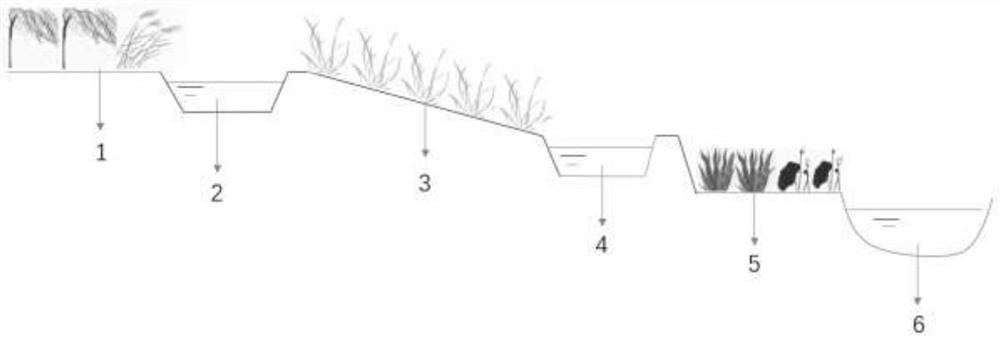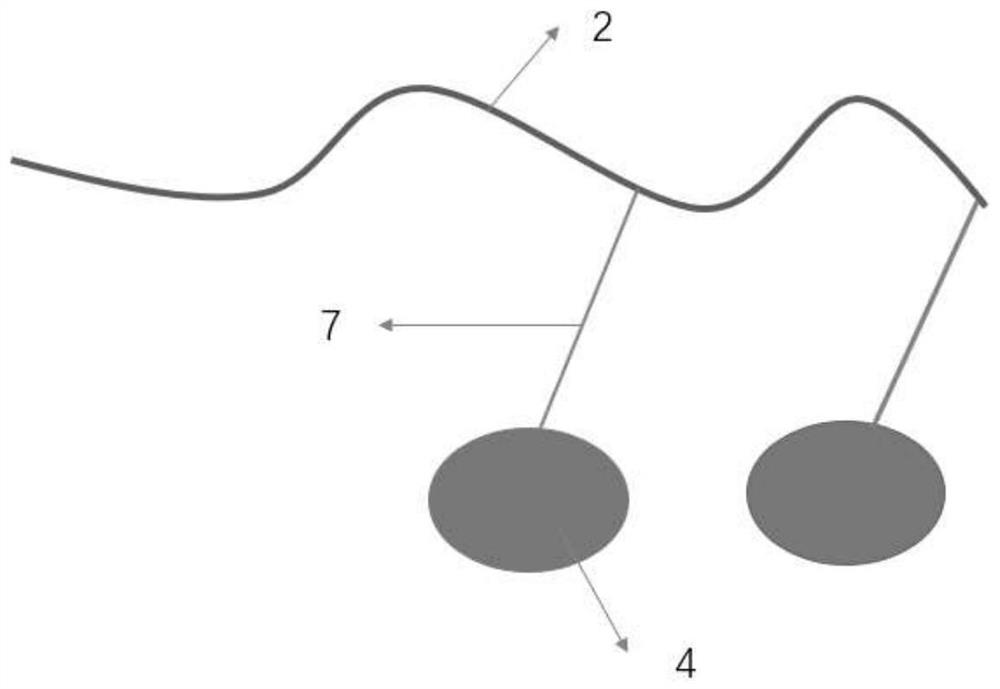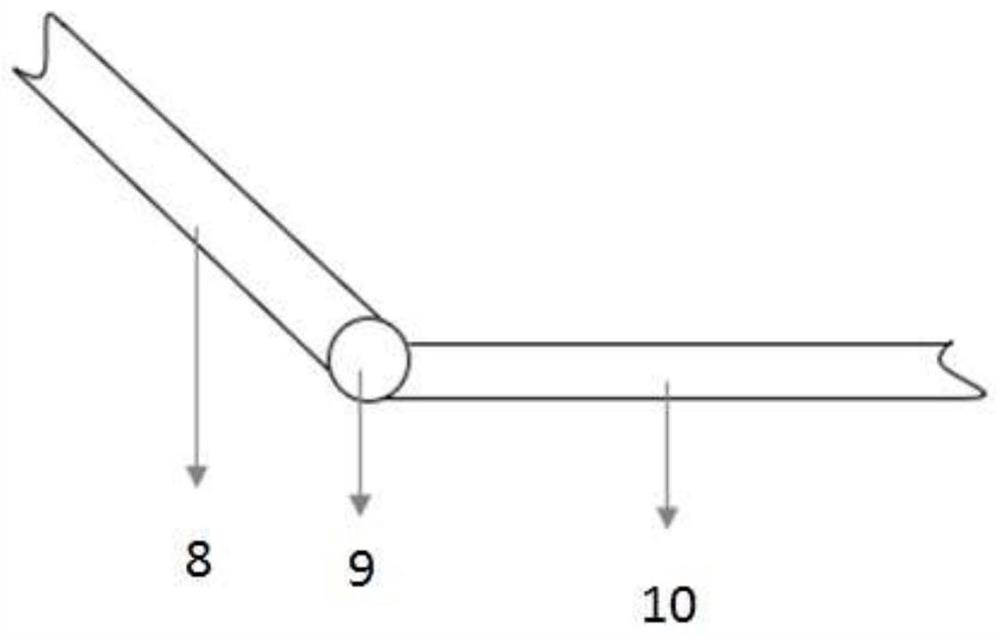Ecological buffer zone with side-mounted bent wetland pond vegetation, and construction method of ecological buffer zone
A buffer zone and ecological technology, applied in the field of water environment ecological management engineering, can solve problems such as single function, and achieve the effect of simple technical implementation, low cost, and no need for fine management
- Summary
- Abstract
- Description
- Claims
- Application Information
AI Technical Summary
Problems solved by technology
Method used
Image
Examples
Embodiment 1
[0063] Embodiment 1 Ecological buffer zone A
[0064] The embodiment of the present invention provides an ecological buffer zone A, specifically refer to figure 1 , figure 2 , image 3 , Figure 4 illustrate.
[0065] The whole is a cascade structure, and the moisture-resistant plant belt, the curved wet zone next to it, the moisture-loving plant belt, the water collection pond, and the natural wet zone are arranged sequentially from the upper end to the lower end of the cascade structure.
[0066] Wherein, the slope of the cascade structure is less than 15°, and the slope of the wet-loving plant zone is less than 10°; specifically, the slope of the cascade structure is 5-10°, and the slope of the wet-loving plant zone is 2-5°; The slope of the structure is 10-15°, and the slope of the moisture-loving plant belt is 5-10°.
[0067] The water in the side curved wetland is diverted from the tributary, and a regulating dam is built on the tributary and the side curved wetlan...
Embodiment 2
[0072] Embodiment 2 Ecological buffer zone B
[0073] The embodiment of the present invention provides another ecological buffer zone B, which will be described on the basis of Embodiment 1.
[0074] Plant at least 2 species of grass, reed, metasequoia, Zhongshan fir, plantain, weeping willow, and maple poplar in the moisture-tolerant plant zone.
[0075] Plant at least one species of cattail and water spinach in the moisture-loving plant zone.
[0076] At least one species of emergent plants such as lotus, canna, calla lily, cattail, centipede, wild rice stem, water onion, calamus and pikegrass is planted in the natural wetland.
[0077] Emergent and submerged plants are planted in the water collection pond, and the emergent plants are selected from at least one of lotus, canna, calla lily, cattail, celery, wild rice stem, water onion, calamus, and barracuda.
[0078] For the submerged water plants, at least one of hornwort, black algae, eye spinach, foxtail algae, and bitt...
Embodiment 3
[0079] Embodiment 3 Construction of large-scale lake reservoir ecological buffer zone
[0080] Select a large lake reservoir with multiple tributaries entering the lake, and delineate and build an ecological buffer zone area: select a land area with heavy non-point source pollution on the upper part of the lake reservoir and within 500-1000m from the maximum water level of the lake reservoir as an ecological barrier area. In the construction area of the ecological buffer zone, the cascade structure of the moisture-resistant plant belt, the curved wet zone next to it, the moisture-loving plant belt, the water collection pond, and the natural wetland zone are arranged in sequence from far to near the shore. The slope of the entire cascade structure is less than 15°, and the slope of the moisture-loving plant belt is less than 10°.
[0081] (1) Moisture-tolerant plant zone: plant at least two species of grass, reed, metasequoia, Zhongshan fir, plantain, weeping willow, and mapl...
PUM
| Property | Measurement | Unit |
|---|---|---|
| width | aaaaa | aaaaa |
| depth | aaaaa | aaaaa |
| depth | aaaaa | aaaaa |
Abstract
Description
Claims
Application Information
 Login to View More
Login to View More - R&D
- Intellectual Property
- Life Sciences
- Materials
- Tech Scout
- Unparalleled Data Quality
- Higher Quality Content
- 60% Fewer Hallucinations
Browse by: Latest US Patents, China's latest patents, Technical Efficacy Thesaurus, Application Domain, Technology Topic, Popular Technical Reports.
© 2025 PatSnap. All rights reserved.Legal|Privacy policy|Modern Slavery Act Transparency Statement|Sitemap|About US| Contact US: help@patsnap.com



